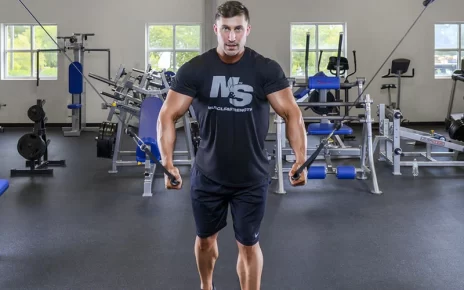Fitness training increases oxygen flow to your blood, improving how efficiently your heart, lungs and blood vessels operate as well as building muscle strength and endurance.
Exercise helps relieve stress, improve mood and energy levels, increase bone density and flexibility and decrease risk for diseases like high blood pressure, cholesterol issues or diabetes.
Variety
Most gyms provide access to an impressive variety of fitness equipment, from stationary bikes and treadmills for cardio training purposes, through treadmill rowing machines and rowing machines, weight benches and racks of free weights used for upper-body exercises, functional training areas that mimic everyday movements for improving balance, coordination and strength and functional training areas with exercises designed to mimic daily movements that mimic real life; there may also be functional training areas designed to mimic daily movements as well as functional training classes such as swimming lessons, spin classes yoga or Pilates that provide variety and challenge during workout sessions.
Equipment
A quality gym must offer various forms of equipment for meeting various exercise needs, from cardiovascular equipment such as treadmills and elliptical trainers, stationary bikes and rowing machines, to strength training equipment like barbells, benches and free weights.
Bench presses are an indispensable piece of strength training equipment, used for lying on a padded bench and performing press exercises such as chest presses and triceps extensions with barbells. A bench press should be part of anyone looking to build shoulder and back muscles.
Fitness centers may also provide equipment designed to increase strength, flexibility, balance, and stability. Resistance bands come in all sorts of shapes, sizes, and levels of resistance – perfect for muscle tone improvement while providing low impact workouts – portable and easy to use! Other common functional gym equipment includes medicine balls, plyometric jump ropes, kettlebells and power plates.
Socialization
Many gyms offer group exercise classes and social areas designed to make meeting people with similar fitness interests easy. Group workouts also make exercising together with friends easier – less likely to result in laziness than exercising alone, having someone encourage you can keep you going when things seem difficult!
Socializing at the gym offers more than psychological advantages: when exercising with others, individuals tend to stick more closely to their workout regimen, and research suggests that positive experiences in group exercise create empathy towards others – something which has also proven helpful for mental health (Grafton 2020).
However, when looking to make new friends at your gym it’s essential that you practice proper gym etiquette. Avoid interrupting people who are working out and instead focus on speaking to them during resting or cooling down periods.
Safety
Maintaining adequate safety measures during workouts can mean the difference between life and death – that’s why gyms prioritize making sure CPR and First Aid equipment is easily available, along with having a defibrillator which is maintained regularly on-site.
Proper instruction of equipment use can help avoid misuse that could result in injuries, whether this involves orientation sessions, videos or in-person demonstrations by trainers. Encouraging members to gradually increase workout intensity is another helpful strategy to prevent overtraining.
Good gym etiquette involves wiping sweat off equipment and reracking weights after use – which you know from experience can save a trip to the hospital! Sturdy non-slip flooring is also essential to avoid accidents on equipment or in weightlifting areas.





